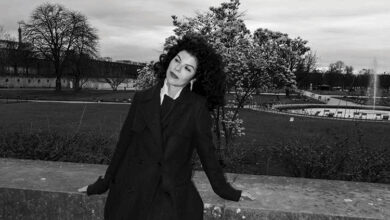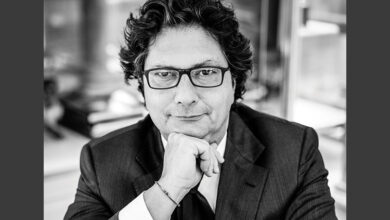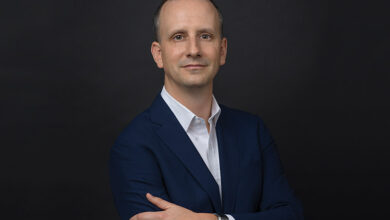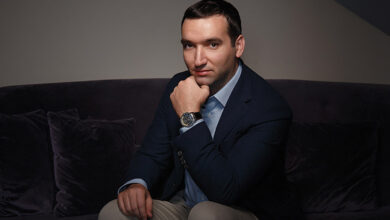From Chopard’s Happy Clown to the Garden of Kalahari
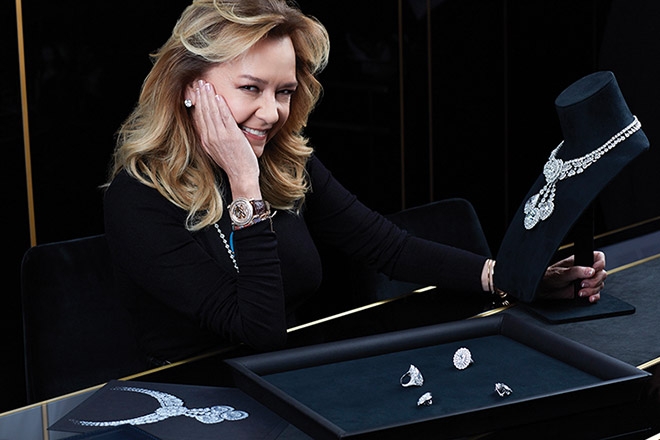
Chopard Garden of Kalahari
Chopard Garden of Kalahari: The strand of haute joaillerie that now runs strongly through the tapestry of the maison of Chopard had its genesis when, in 1985, a young girl designed a Happy Clown who had diamonds dancing in his tummy.
“Day & Night” talks to that young girl, now the Co-President and Artistic Director of Chopard, Caroline Scheufele, who recently unveiled the Garden of Kalahari
Q: Can you tell us about the new additions to the Ice Cube line, which is more urbane and aimed at the younger generation?
A:The Ice Cube collection is a classical line that has been very successful, especially in our high-end jewellery as it is a pure, clean design that is invisibly set, full pave, etc. We actually took this idea, which we haven’t really changed but wanted to adapt for the younger generation – the millennials, who are looking for something urbane, edgy, trendy, and cool. We thought it is time we offered something to our younger customers.
It is the same with the Happy Diamonds; the young girls today like to mix things. They no longer set aside certain jewellery for certain occasions but combine and wear them as they wish. I personally have always done that.
Q: How has the feedback been for the Garden of Kalahari collection?
A:Overwhelming; for years, I have been doing a special and unique project – follow a rough diamond on its journey from the mine to the red carpet when someone is styling it, as Dame Shirley Bassey did at the launch, when she sang “Diamonds are forever”. This is something that has enriched my career and will be a significant part of Chopard’s history, which it already is. Another important fact is that it is from the first certified diamond mine.

Q: How did you acquire the Queen of Kalahari?
A:I always keep my eyes open; I also have some partners who work in the diamond industry and I always tell them to call me first if something unique and special comes up. That’s how I was able to get it.
Q: The Happy Diamonds watch was first unveiled in 1976 while the Happy Clown pendant was created in 1985, marking the beginning of Chopard’s foray into jewellery. Did you expect that this would grow into such a phenomenally success?
A:I was still in school when I designed the Happy Clown pendant; obviously, the Happy Diamonds watch existed – they were very elegant evening watches.
My mother had one that she used to wear and I was always looking at it, and as a little girl, I was amazed by these moving diamonds.
Since I loved the circus and especially the clowns, I designed the little clown with diamonds in the tummy. That was really the beginning of the Happy Diamond jewellery because my dad saw my design and had it made for me as a Christmas surprise and that led to the whole Chopard world of jewellery.

Q: Does the fact that Chopard produces all its movements in-house impact the ladies’ watches and if so, how?
A: Actually, not all of our watches have movements manufactured in house; it is more the high-end watches that have them, especially the men’s collections such as the L.U.C, which is a tribute to watchmaker Louis-Ulysse Chopard – the founder of the company.
Now, more and more, as the production gets bigger, we have access for the high-end ladies watches also. For example, the secret watch of the Kalahari collection has a movement from our own manufacture.
Q: What led you to get involved in the ethical sourcing of diamonds and gold?
A: I think that the ultimate luxury today is to know – when you fall in love with a product and it is a luxury product, not something that is vital to life like food – exactly how that product has been produced, from A to Z. I personally also have the pleasure of working with the most beautiful gemstones and diamonds, all of which come from our planet, just as much as the gold.
All of our raw materials are from the planet. We do beautiful things from them and I think it is our duty to not spoil the planet while extracting them from the ground.

Q: What are your future plans for Eco-Age and the Green Carpet Challenge?
A:The whole project of Fairmined gold and what we call the Green Carpet Challenge was started by Livia Firth, who is the head of Eco-Age, five years ago.
We call it the Journey because this is not something you do one day, but can only do one step at a time.
We have expanded the Fairmined gold into the boutique collection now and this would be produced entirely from Fairmined gold. At the Cannes, we will unveil a new coloured stone that has also been mined the same way.
Q: It was in 1998 that Chopard became official partner of the Cannes Film Festival, but it was only in 2008 that the first Chopard Red Carpet Collection was unveiled. Why did this take so long?
A: I think things happened naturally and organically.
In the beginning, we just used to bring our latest pieces to Cannes to the Red Carpet and a couple of years later, I was saying that we would be unveiling this at Cannes.
So, for the 60th anniversary of Cannes, which was ten years ago, I decided to make a special collection for the Red Carpet that would be presented at Cannes, and that is how it started.
Q: Do you get any inspiration from your frequent travels across the world? If yes, can you give us an example?
A: Definitely, most of my inspirations come when I am not in the office.
When I am in the office, I am behind stacks of paper, answering the phone, emails, and so on. Nature is inspiring, as are exotic countries, flowers, and architecture. So, whenever I travel, I have my eyes open.




